- Greater Yellowlegs and probable Yelkouan Shearwater in Cornwall
- Solitary Sandpiper on Isle of Scilly
- Sharp-tailed Sandpipers in Cleveland and Co Wexford
- Possible Sooty Tern in Durham and Northumberland
As the avian aftermath of hurricane Irene passed, we were in for even more arrivals following the stronger trans-Atlantic crossing of hurricane Katia. This hit our shores on Monday and brought with it even more Nearctic vagrants, primarily waders. The most notable of these was a summer-plumaged adult Greater Yellowlegs at Wadebridge (Cornwall) on 12th–13th. It initially showed well at Treraven Meadows on 12th and was refound the next day on the expansive Camel Estuary, where it remained for most of the day. This is the second record for the county, following one in 1955.

Greater Yellowlegs, Treraven Meadows, Cornwall (Photo: Ashley Hugo)
Greater Yellowlegs, Treraven Meadows, Cornwall (video: MrWdlc).
Vying for wader of the week was an apparently exhausted Solitary Sandpiper on St Mary's (Scilly) on 13th, maintaining the island's track record for the species. Of the 37 records accepted to the end of 2008, no fewer than 12 have been on the islands.
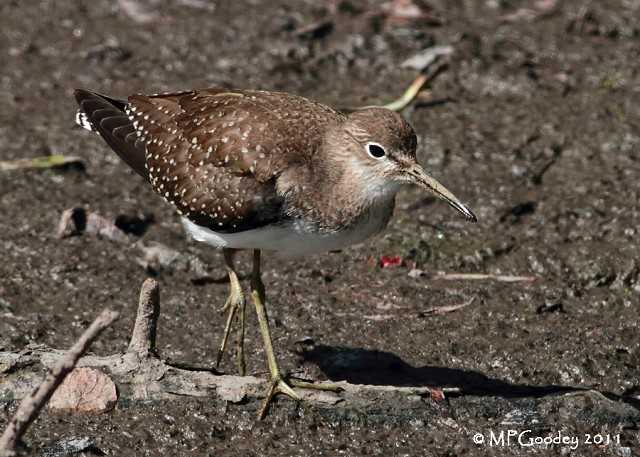
Solitary Sandpiper, St. Mary's, Isles of Scilly (Photo: Martin Goodey)
A one-day adult Sharp-tailed Sandpiper was at Greatham Creek (Cleveland) on 9th, while one also remained at Tacumshin (Wexford) all week. Tacumshin was still the place to be for other Nearctic waders, this week holding American Golden Plover, 10 Buff-breasted Sandpipers, two White-rumped Sandpipers, a Semipalmated Sandpiper and five Pectoral Sandpipers, with a supporting cast of Citrine Wagtail, Red-necked Phalarope and 25 Curlew Sandpipers!
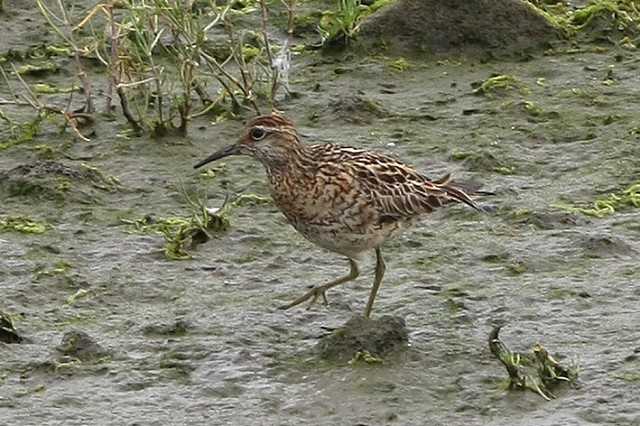
Sharp-tailed Sandpiper, Greatham Creek, Cleveland (Photo: Roy Harvey)
Sharp-tailed Sandpiper, Greatham Creek, Cleveland (video: BoyWonderBirding)
Aside from waders, these was another probable Yelkouan Shearwater past Pendeen (Cornwall) on 12th and two records of Bridled or Sooty Tern. One in the northeast was first seen passing through Derwent Reservoir (Durham) on 13th, and then again briefly later that evening at nearby Waskerley Reservoir, with a further report from Colt Crag Reservoir (Northumberland) on 14th. There was also another report of a bird distantly off Gormanstown (Meath) on 14th. Both of these species have a track record of being mobile and hard to connect with, but many will be hoping that they settle in time for the weekend.
Another probable that didn't come to be was a very bright stint at Weir Wood Reservoir (East Sussex) on 11th–12th; originally thought to be an adult Red-necked Stint, it was eventually IDed as a summer-plumaged Little Stint, a plumage state rarely seen in the UK.
There was another small group of Snow Geese reported this week — four at East Chevington (Northumberland) on 10th — and last week's small groups of Ruddy Shelducks were topped by a group of 11 at Garthorpe (Leics) on 9th–13th.
Considering the wind conditions, it was perhaps surprising there weren't more reports of Nearctic wildfowl during the week. There was a single American Wigeon, an eclipse drake at Spey Bay (Moray & Nairn) on 11th, one remaining Ring-necked Duck, the drake at Chew Valley Lake (Somerset) all week, and two drake Blue-winged Teal: one remained at Saltholme (Cleveland) to 11th and a new bird was at Bridgend Farm Pool (Clyde) on 10th. There was also a probable female Lesser Scaup at Holme Pierrepont (Notts) on 9th. The drake Ferruginous Duck also remained at Chew Valley Lake (Somerset) to at least 12th. Just one drake Surf Scoter was off Blackdog (Aberdeenshire) to 11th, and another went north past Flamborough Head (East Yorks) on 11th, along with a notable 5,000 Little Gulls heading south.
On the sea, the strong westerlies that had tracked across from the Caribbean and along the eastern seaboard of the USA were sure to bring plenty of seabirds into our waters, and numbers didn't fail to impress. As might be expected, Bridges of Ross (Clare) stood out as the place to be seawatching, with Fea's Petrel recorded on both 12th and 14th and some incredible numbers of birds recorded on 12th–13th. Peak daily counts over these two days included six Wilson's Storm-petrels, 21 Long-tailed Skuas, over 200 Sabine's Gulls, 80 Leach's Storm-petrels, seven Grey Phalaropes and 1000 Sooty Shearwaters. Pendeen (Cornwall) also had its fair share of quality, with day peaks of three Wilson's Storm-petrels, 21 Sabine's Gulls, 11 Great Shearwaters, 23 Balearic Shearwaters and seven Grey Phalaropes over 12th–13th.

Long-tailed Skua, Dungeness, Kent (Photo: Martin Casemore)
Other Great Shearwaters passed many sites in the southwest extremities of Britain and Ireland, but the peak counts were much reduced: 12 past Pendeen (Cornwall), five past Porthgwarra (Cornwall) and three past Dursey Island (Cork). Away from the southwest, singletons were also recorded past North Ronaldsay (Orkney) on 9th and South Stack (Anglesey) on 12th.
There were smaller numbers of Cory's Shearwaters, including three past Porthgwarra (Cornwall) on 11th, two past Seven Heads (Cork) on 11th and two reported close in past Cley Marshes (Norfolk) on 13th. Other singletons passed Helvick Head (Waterford) on 10th and Kilnsea (East Yorks) on 11th, with further possibles past Titchwell (Norfolk) and Teignmouth (Devon) on 11th. There were also still good numbers of Sooty Shearwaters reported, including peaks of 1000 past Bridges of Ross (Clare) on 12th and 600 past Annagh Head (Mayo) on 13th. Several other Wilson's Storm-petrels were also driven closer to land, including five on the Scilly pelagic on 8th and two past Brandon Point (Kerry) on 13th. The west coast also saw plenty of Leach's Storm-petrels, though the only double-figure counts were of 20 past Bispham (Lancs) on 13th, 18 past Blackpool (Lancs) on 13th and 13 past Steart (Somerset) on 12th.

Wilson's Storm-petrel, Scilly pelagic, Isles of Scilly (Photo: Joe Pender)

Sooty Shearwater, Bridlington RSPB Skua Cruise, East Yorkshire (Photo: Andy Hood)
Reports of Great White Egrets came from just eight sites this week, including new birds at Keyhaven Marshes (Hants), Covehithe (Suffolk), Fairburn Ings (West Yorks) and Scalby Mills (North Yorks). The last bird was also the furthest north reported. Cattle Egrets remained at Thorney Island (West Sussex), Dungeness (Kent) and Cley Marshes (Norfolk); Norfolk also saw wandering birds at Wiveton, Hickling Broad, Kelling and Titchwell. The only other new bird was at Rogiet (Gwent) on 14th. Also in Norfolk, a juvenile Little Bittern at Titchwell on 9th–12th proved rather popular, though it was typically elusive at times. There was also a second bird flushed from a garden on the River Avon at Malmesbury (Wilts) on 13th, but it couldn't be relocated. There are five previous records in the county but, apart from one in 1940, they were birds caught or shot in the 19th century. The juvenile Night Heron also popped up again at Weir Wood Reservoir (West Sussex), seen on 9th.

Cattle Egret, Dungeness RSPB, Kent (Photo: Martin Casemore)

Little Bittern, Titchwell RSPB, Norfolk (Photo: Roger Ridley)
Recent confirmation of breeding of Spoonbills again at Holkham (Norfolk) goes some way to explaining the regular groups seen along the entire north Norfolk coast over the summer. Plenty of other small groups were seen across the country as far north as Potteric Carr (South Yorks), with notable flocks of 20 at Orford Ness (Suffolk), 14 at Breydon Water (Norfolk), 13 at Southwold (Suffolk) and nine at Brownsea Island (Dorset).

Spoonbill, Cley Marshes NWT, Norfolk (Photo: Andy Thompson)
The Black Kite in Cornwall found a routine at last; it was regularly seen at Polgigga on 10th–14th. The juvenile female Pallid Harrier remained at Tacumshin (Wexford); another was on Fair Isle on 11th–14th and possibly as many as five birds were on Shetland — three on south mainland, including one distinctive bird with signs of oiling on its plumage, and others on Unst and Yell. There was then a juvenile photographed near Blewbury (Oxon) on 8th, a first for the county, and a male was seen over Hollow Heath (Norfolk) on 10th; it wasn't relocated, though a possible was at Cantley Beet Factory on 14th. Norfolk also hosted the week's only Red-footed Falcon, an adult female at East Dereham on 11th.
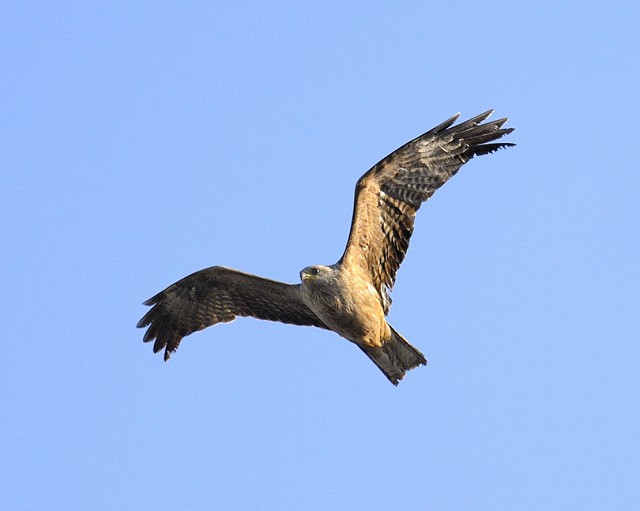
Black Kite, Polgigga, Cornwall (Photo: Mike Coleman)

Pallid Harrier, Churn, Oxfordshire (Photo: Roger Wyatt)
The only Spotted Crake was one remaining rather elusively at Inner Marsh Farm (Cheshire) all week. The adult American Golden Plovers remained at Rosslare (Wexford) to 10th and Whitburn Steel (Durham) to 13th, with another at Seafield (Clare) on 13th.
Several new Lesser Yellowlegs turned up this week, on St Agnes (Scilly) on 11th–13th, at Rosscarbery (Cork) on 12th–13th and at Drift Reservoir (Cornwall) on 14th. Drift also saw a juvenile Semipalmated Sandpiper on 13th–14th, and up to four juvenile Pectoral Sandpipers and two brief Buff-breasted Sandpipers on 12th. Also in Cornwall, the first Long-billed Dowitcher of the autumn was a juvenile at Stithians Reservoir on 14th. The juvenile Spotted Sandpiper remained on the Plym Estuary (Devon) to 12th; presumably a different bird was on St Mary's (Scilly) on 13th–14th.

Lesser Yellowlegs, Drift Reservoir, Cornwall (Photo: Tony Mills)
Semipalmated Sandpiper, Drift Reservoir, Cornwall (video: chippler01)
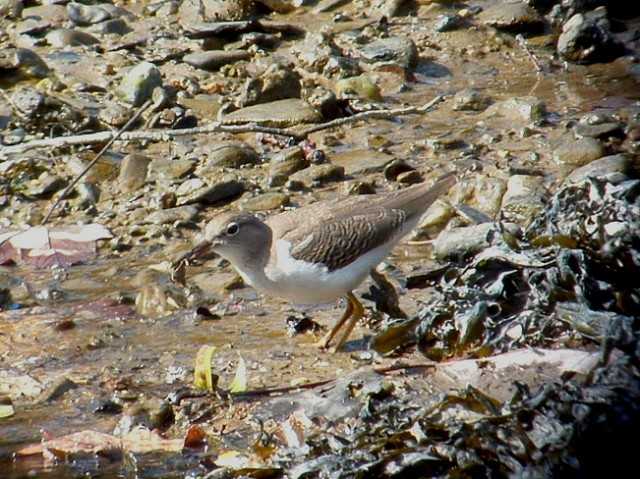
Spotted Sandpiper, Plym Estuary, Devon (Photo: Phil Edmonds)
Various wind-blown Grey Phalaropes were recorded across the country and birds were recorded at many inland sites, including two at Grafham Water (Cambs) and others at Calvert Lakes (Bucks), Holt Prairie (Wilts) and Queen Mary Reservoir (Surrey). On the coast, up to 10 were in Chesil Cove (Dorset).

Grey Phalarope, Grafham Water, Cambridgeshire (Photo: Kevin Du Rose)
Semipalmated Sandpipers remained at Carrahane Strand (Kerry) all week and Muckross (Donegal) to 11th, with other new birds at Ballycotton (Cork) on 10th–12th, Beacon Ponds and Patrington Haven (East Yorks) on 10th–12th, Chew Valley Lake (Somerset) on 12th–13th, Smerwick Harbour (Kerry) on 12th–13th and Blennerville (Kerry) on 13th.

Semipalmated Sandpiper, Ballycotton, Cork (Photo: Ronan McLaughlin)
The year's first Least Sandpiper was at Farlington Marshes (Hants) on 8th, though in an area with no public access. This is the second record for the site and county, following one in May 1977. Two White-rumped Sandpipers were at Rosslare (Wexford) all week, and two were also at Uig, Lewis (Outer Hebrides) to 13th. Uig also held a juvenile Baird's Sandpiper on 13th; others were on the Hayle Estuary (Cornwall) to 11th, on St Agnes and Gugh (Scilly) on 8th–10th, at Pennington Marshes (Hants) on 14th and, in Ireland, at Pilmore (Cork) on 8th and Downings (Donegal) on 14th.
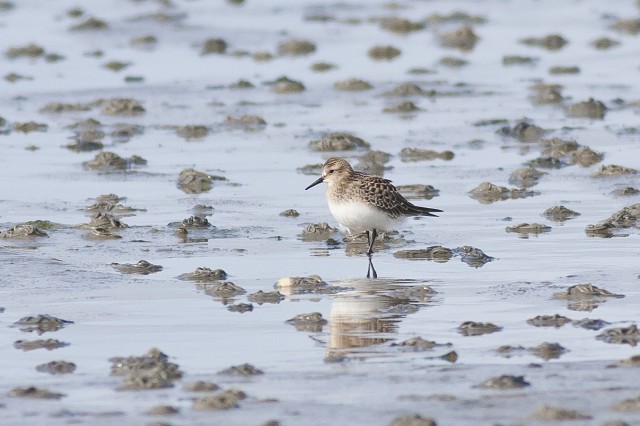
Baird's Sandpiper, Downings, Donegal (Photo: Craig Nash)
Baird's Sandpiper, Hayle Estuary, Cornwall (video: chippler01)
Pectoral Sandpipers were far too numerous to list, but appeared at as many as 45 sites across the country, including notable inland records at Crookham Common (Berks) on 13th–14th, Wilstone Reservoir (Herts) to 11th, Pitsford Reservoir (Northants) on 10th–14th and two at Collingham Pits (Notts) on 9th–12th. Also of note were five at Loch of Strathbeg (Aberdeenshire) and three at both Eoropie and Butt of Lewis (Outer Hebrides) during the week. Buff-breasted Sandpipers were almost as widespread, being seen at 32 coastal sites, including east-coast birds at Titchwell (Norfolk) on 8th–9th, Rye Harbour (East Sussex) on 8th–10th and Rimac and Donna Nook (Lincs) on 13th–14th. Peak flocks were eight on St Mary's (Scilly), seven at Loop Head (Clare), five briefly at Stithians Reservoir (Cornwall) and four at White Nothe (Dorset).

Pectoral Sandpiper, Crookham Common, Berkshire (Photo: Gavin Farnell)

Buff-breasted Sandpiper, St. Mary's, Isles of Scilly (Photo: Martin Goodey)
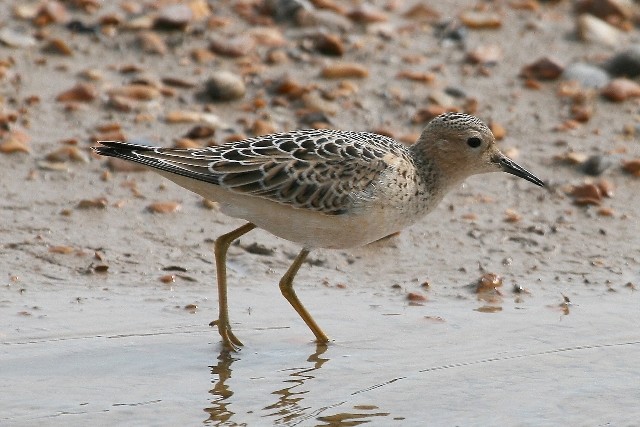
Buff-breasted Sandpiper, Rye Harbour NR, East Sussex (Photo: Mike Hook)
One intriguing record was of seven juvenile Long-tailed Skuas over Abberton Reservoir (Essex) on 10th. Glaucous Gulls remained at Dungeness (Kent) and Budleigh Salterton (Devon) but there were no records of Iceland Gull. Ring-billed Gulls remained at Hengistbury Head (Dorset) to 8th and Stanpit Marsh (Dorset) to 9th, and two adults were at St John's Lake (Cornwall) on 12th. As last week, the only Bonaparte's Gull was at Sunderland and Whitburn Steel (Durham) to at least 11th.
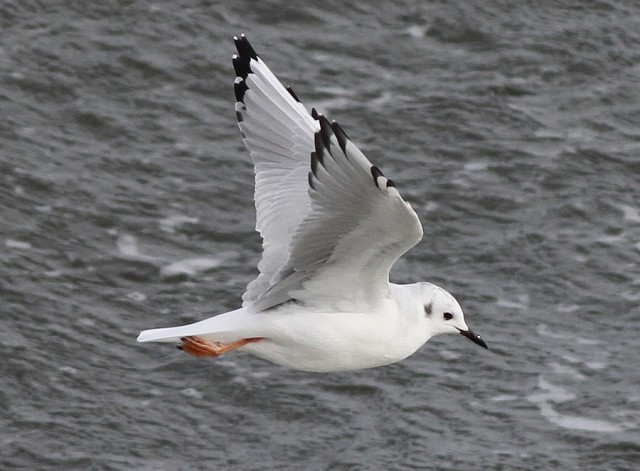
Bonaparte's Gull, Whitburn Steel, Durham (Photo: Sylvia Brennan)
As previously mentioned, there were very large numbers of Sabine's Gulls seen from sites in the west, plus the odd bird in the North Sea and English Channel. There were also plenty of displaced inland birds, the most notable being juveniles at Venus Pool (Shropshire), Belvide Reservoir (Staffs), Gailey Reservoirs (Staffs) and Crown Lakes (Cambs), and adults at Grafham Water (Cambs), Queen Mary Reservoir (Surrey) and William Girling Reservoir (London).
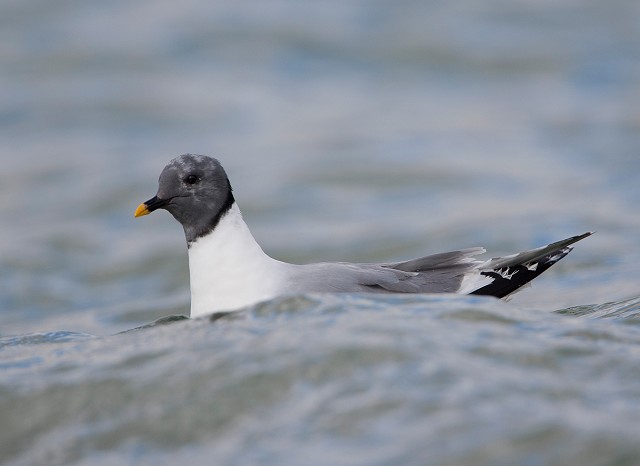
Sabine's Gull, Grafham Water, Cambridgeshire (Photo: Kevin Du Rose)
The juvenile White-winged Black Tern remained at Farmoor Reservoir (Oxon) all week and there was also a report of a Whiskered Tern at Loch of Strathbeg (Aberdeenshire) on 12th, the fourth county record.
The regular Scilly Bee-eater roamed widely all week, and one was also over Swine Moor (East Yorks) on 9th. New Hoopoes were recorded at Whitland (Carmarthenshire) on 8th, Glynde (East Sussex) on 10th–13th, St Erth Praze (Cornwall) 10th and Bamburgh (Northumberland) on 11th. Numbers of Wrynecks increased, with birds reported from at least 23 sites as far north as Doncaster (South Yorks) and two on Skomer (Pembrokeshire) and at Three Castles Head (Cork). There was a single Red-rumped Swallow at Crayford Marshes (London) on 8th.
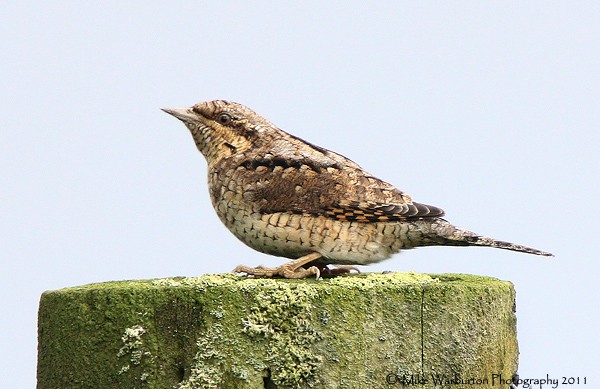
Wryneck, Garnlydan Reservoir, Gwent (Photo: Mike Warburton)
The first-winter Citrine Wagtails remained at Cley Marshes (Norfolk) to 10th and on Fair Isle to 8th, and new birds were on North Ronaldsay (Orkney) on 12th, at Mizen Head (Cork) on 9th, at Carrahane Strand (Kerry) on 8th and at Farmoor Reservoir (another first for Oxfordshire) on 10th. There was also a new bird on St Mary's (Scilly) on 13th–14th, probably the third on the islands this autumn.
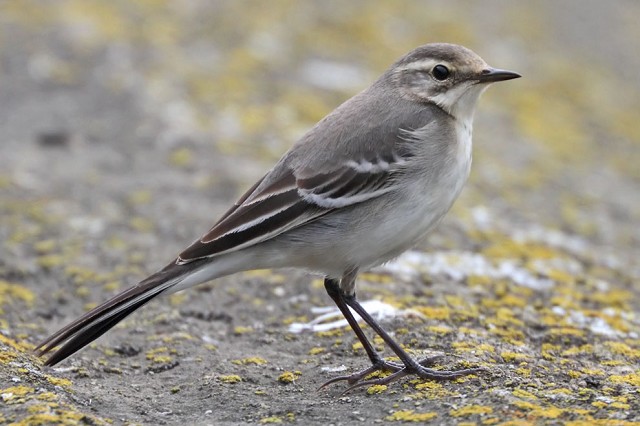
Citrine Wagtail, Farmoor Reservoir, Oxfordshire (Photo: Stephen Burch)
The only Red-backed Shrikes were on Bryher (Scilly) on 11th–13th and on North Ronaldsay (Orkney) on 14th. Perhaps as many as three Woodchat Shrikes were on Scilly, on St Mary's and St Martin's. Scilly also held an Aquatic Warbler on Big Pool, St Agnes from 9th–14th, with two there on 12th.
The only Marsh Warbler was again in the Northern Isles, on Foula (Shetland) on 8th, along with two Common Rosefinches and a Barred Warbler. The Melodious Warbler remained in the Bird Observatory garden at Portland (Dorset) to 8th, and others were at Porth Meudwy (Gwynedd) on 8th, at Mizen Head (Cork) on 11th and on Fair Isle on 14th. There was just one Icterine Warbler, at Blackhall Rocks (Durham) on 9th. Mizen Head also saw a Western Bonelli's Warbler on 11th–14th, the second for the site (the other four county records all come from Cape Clear), and there was another on Fetlar (Shetland) on 12th.

Western Bonelli's Warbler, Mizen Head, Cork (Photo: Sean Cronin)
The first Yellow-browed Warbler of the autumn was reported from the unlikely location of Little Tey (Essex) on 10th. Others later in the week were all on Shetland: on Out Skerries and at Norwick, Unst on 13th and at Burravoe, Yell on 14th. Also in Shetland, the Arctic Warbler remained at Hoswick to 9th. The only Greenish Warbler was one on Cape Clear (Cork) on 10th–11th. Various Barred Warblers were at several sites throughout the Northern Isles, including two at Skaw, Unst (Shetland) and two on Fair Isle, while further south birds visited other Bird Observatories at Flamborough Head (East Yorks), Gibraltar Point (Lincs) and Landguard (Suffolk).

Arctic Warbler, Hoswick, Mainland, Shetland (Photo: James Wood)
The Scilly Ortolan Bunting was back on St Mary's on 14th, but this was overshadowed by the start of perhaps another influx of Lapland Buntings. Birds were quite widespread, though the only large groups were in the north and west: 42 at Blacksod (Mayo), 28 at Butt of Lewis (Outer Hebrides), 28 on North Ronaldsay (Orkney), 20 on Tory Island (Donegal), 20 on Fair Isle, 11 at Erris Head (Mayo) and 11 at Loop Head (Clare).

Lapland Bunting, Abbotsbury, Dorset (Photo: anon)
The first Nearctic passerine in what we hope will be a bumper autumn was a Red-eyed Vireo commuting between the Sally Port and The Garrison on St Mary's (Scilly) on 13th–14th. This is the earliest British record, the only earlier Irish record coming from Cape Clear (Cork) on 5th September 2004.

Red-eyed Vireo, St. Mary's, Isles of Scilly (Photo: Martin Goodey)
Red-eyed Vireo, St. Mary's, Isles of Scilly (video: benjimi1)
Many of last week's Common Rosefinches had moved on this week, though five were at Norwick, Unst (Shetland) on 8th, four on Fair Isle, three on North Ronaldsay (Orkney) to 11th, two on Foula (Shetland) to 8th and others on Skokholm (Pembrokeshire) on 9th–11th and at Burravoe, Yell (Shetland) on 12th. Lastly, the juvenile Rose-coloured Starling remained at Isle of Whithorn (Dumfries & Galloway) to 8th and another was at Minsmere (Suffolk) on 11th.

Rose-coloured Starling, Minsmere RSPB, Suffolk (Photo: Charles Cuthbert)
Photo of the Week: 8th–14th September

Little Bittern, Titchwell RSPB, Norfolk (Photo: Ian Clarke)
Since starting to post his images to BirdGuides only a year and a half ago, Suffolk bird photographer Ian Clarke has already contributed almost 700 images of his local birdlife. Ian's images cover a wide range of common and rare birds, always with a strong sense of 'realism' that makes them very popular in the BirdGuides community. Much of this realism comes from the inclusion of enough environmental detail to convey a sense of place. A perfect example is Ian's image of a juvenile Little Bittern that dropped into Titchwell RSPB reserve this week. The clarity and depth of this image makes it ideal for 'virtual birders', who get vicarious enjoyment of rare birds that they are unable to see in the flesh. Perfectly timing his shot to capture this small reedbed-dweller in characteristic pose finally gave Ian his first Photo of the Week.

Grey Phalarope, Berrow, Somerset & Bristol (Photo: James Packer)

Grey Heron, Studley, Warwickshire (Photo: Mike Lane)
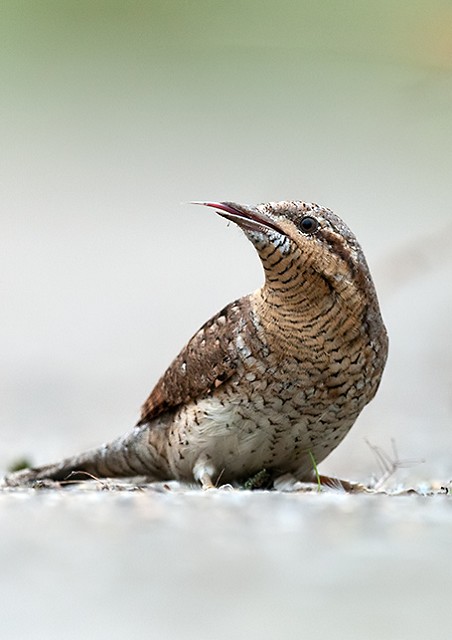
Wryneck, South Fambridge, Essex (Photo: Steve Hiscock)

Merlin, Denmark (Photo: Morten Scheller Jensen)

Red-necked Grebe, Gailey Reservoirs, Staffordshire (Photo: Chris Cook)
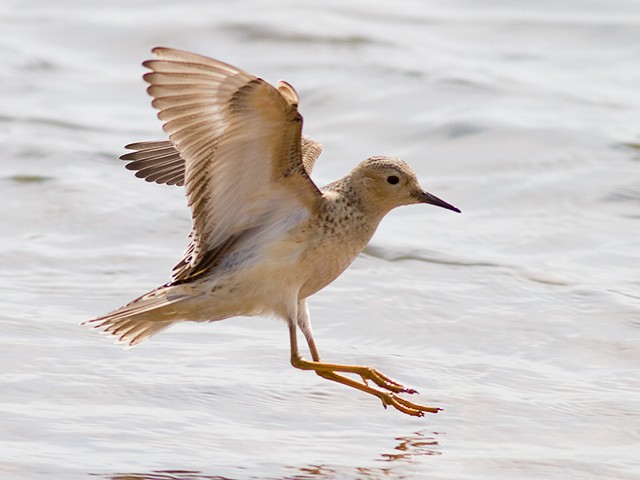
Buff-breasted Sandpiper, Rye Harbour NR, East Sussex (Photo: Mike Gould)
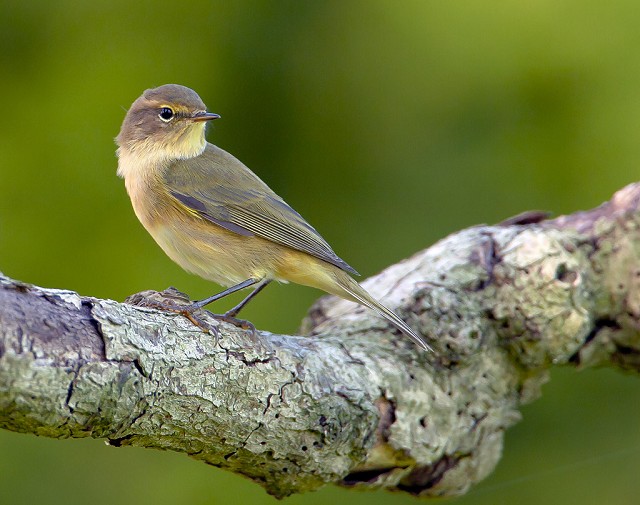
Chiffchaff, undisclosed site, Warwickshire (Photo: Tom Melton)

Knot, St. Mary's, Isles of Scilly (Photo: Gavin Farnell)

Egyptian Nightjar, Qatar (Photo: Dileep Kumar)

Water Rail, Upton Warren NR, Worcestershire (Photo: Peter Walkden)

Northern Wheatear, Bulwell, Nottinghamshire (Photo: Darren Chapman)

Coal Tit, Wayoh Reservoir, Lancashire (Photo: John Barlow)
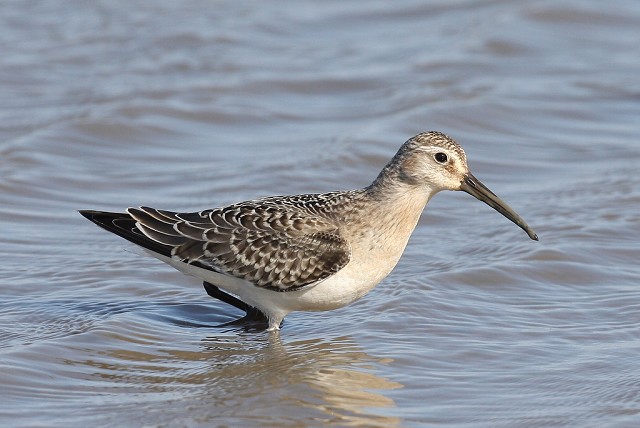
Curlew Sandpiper, Titchwell RSPB, Norfolk (Photo: Adi Sheppard)

Citrine Wagtail, at sea, Orkney (Photo: Julian Bell)

Pallid Harrier, Burravoe, Yell, Shetland (Photo: Dougie Preston)

